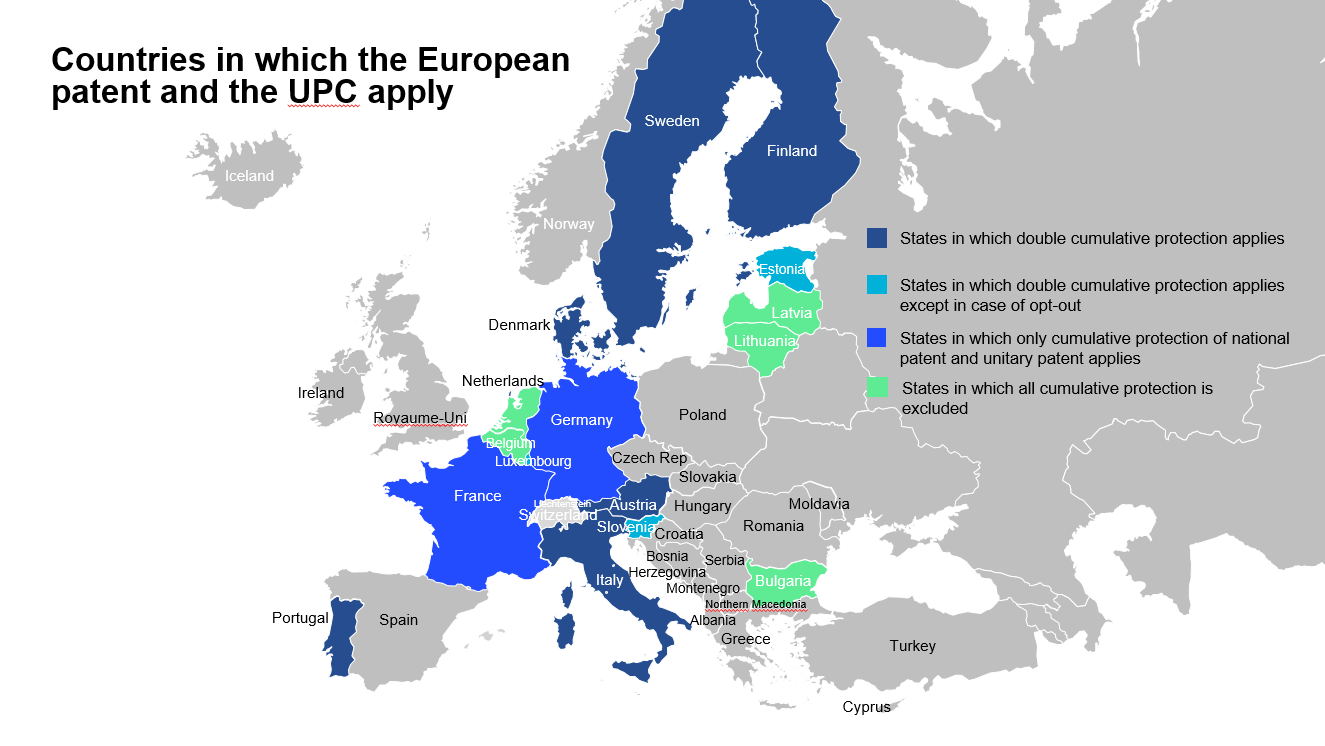Cumulative Protection: European Patent and National Patent vs Unitary Patent and National Patent
1. Cumulative Protection: European Patent and National Patent
The issue of cumulative protection provided to an invention is not uniformly addressed among the member countries of the European Patent Office (EPO). Article 139(3) of the EPC allows contracting states the freedom to permit or exclude cumulative protection for an invention described in both a European patent application or a granted European patent, and a national patent application or granted national patent with the same filing or priority date.
Currently, only a minority of the contracting states (10 out of 39) do not exclude (e.g., Austria, Denmark, Poland) or explicitly allow in their respective national legislations (Italy, Portugal) the possibility of such cumulative protection.
In the context of the UPC system adoption, Germany and France have incorporated into their respective legislations the possibility of cumulative protection between a classic European patent and a national patent in the case where the European patent is not opted out from the UPC jurisdiction. Otherwise, if the classic European patent is opted out, cumulative protection is not possible.
2. Cumulative Protection: Unitary Patent and National Patent
Under the system of European patents with unitary effect, Regulation (EU) No 1257/2012 does not exclude the possibility that national law may allow cumulative protection through both a national patent and a European patent with unitary effect.
The majority of states that have ratified the UPC Agreement (13 out of 17) do not exclude or explicitly allow cumulative protection between a national patent and a unitary patent.
Conversely, the Netherlands, Belgium, Bulgaria, Latvia, and Lithuania have excluded this possibility. Note that Luxembourg is likely to adopt a draft law also going in the direction of this prohibition.


